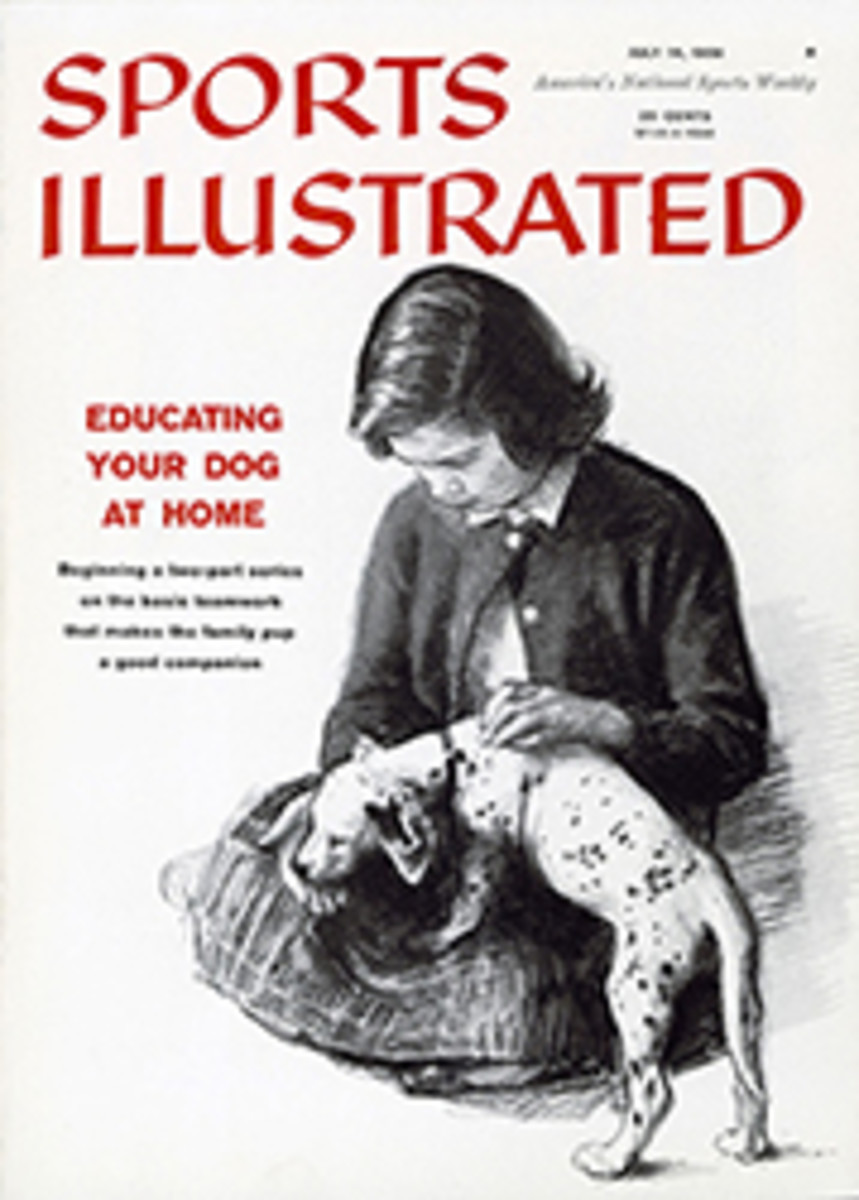
Beware of the bears
The most mysterious trait of the great American tourist is the steadfast refusal to regard the bears in the national parks as wild animals.
If a bear walked into a man's backyard the householder would barricade himself inside in terror, phone the police, bawl out the mayor and write an indignant letter to his Congressman. But let that same man and his family take to the highways of some national park and, likely as not, they will ignore warnings, regulations and fines and go up and embrace the first bear they see as though it were some long lost relative.
Visitors to the national parks have done things to and with bears that would make a thoughtful man's hair curl. Take the ranger in the Great Smoky Mountains National Park who came upon this family scene. The man was holding his small boy on the back of a full-grown black bear while his wife stood out front snapping pictures with carefree abandon. When the ranger drove off the bear with his three-foot bear stick and asked the man what in thunderation he thought he was doing, the man informed the ranger that these bears were tame and berated him for spoiling their fun.
Most accidents result from feeding the bears. The tourist hands the bear half of his sandwich and then becomes terror-stricken when the bear advances to get the other half. If the tourist doesn't let go his half real quick he is apt to have his arm ripped open. Many of these accidents are not reported to park officials because the victims know they were violating the law by getting chummy with a bear in the first place.
Many visitors to the Smokies spread their picnic lunches right on the shoulder of the highway. A bear comes along, chases family after family into their cars and helps himself to one spread after another. Few of these people get sore at the bear. To have a bear eat your lunch is something to talk about when you get home. The bears are the greatest attraction in the Great Smoky Mountains National Park. Women have broken into tears when their visit ended without seeing a bear.
Motorists get into a frenzy when bears appear along the highway. Leaving their cars, they rush for the bear with food and cameras. Sometimes they forget to set their brakes and the car goes rolling down the mountainside. One time a Texan was driving through the park when his car was struck by another. He jumped out to raise sand but was nonplused to find there was nobody in the other car. Its owner was somewhere up the hill watching a bear.
Bears who leave their pursuit of natural foods in the forest to take up a life of easy handouts along the highways soon associate automobiles with food. Many a car left open has been invaded. In a western national park a man returned to his car to find a bear rummaging around in the back seat. The man stood by, wondering what to do about it. He watched as the bear climbed over into the front seat and continued its search for grub. The problem was solved when the bear sat down on the steering wheel and sounded the horn. The scared bear came out of the car but took the front door with him. The man watched as the bear ran down the mountain with the car door draped around its neck. The man was still wondering what to do about it.
Hunters write harrowing tales of experiences with bears but the tourist likes to pet them. Once I was in the headquarters of the Great Smoky Mountains National Park when a group of girls in their early teens came in with a protest. Their leader was a young lady in shorts and pony tail who could not have been much older than her charges. They explained to the ranger on duty that they had obeyed all the rules and had kept their food locked in the car, but a bear came and tore their tent anyway. They thought this was unfair of the bear and wanted to know if it would be all right if they threw rocks at the bear and chased him away.
When a bear gets too bold along the highway it is caught in a wheeled trap made from six-foot sections of corrugated culvert pipe baited with meat bones or honey. The trap is hitched behind a truck and the bear is hauled to some remote point 25 or 30 miles away and released. But it takes him only a few days to make his way back to his happy hunting ground among the tourists.
The National Park Service would not think of getting rid of the bears, because the people love them so. But park officials dream of the day when tourists will treat bears as wild animals. It seems, though, that that day will never come. The tourist's yearning to get cozy with a wild bear remains the most mysterious trait of the species.
TWO PHOTOS
DAVID GOODNOW
Typical national park scene shows cute mama bear and cub begging handout from fascinated tourist. The logical result: mama bear sights food, seeks same.
ILLUSTRATION
MOOSE MUSCLES IN (SI, FEB. 14, 1955)

